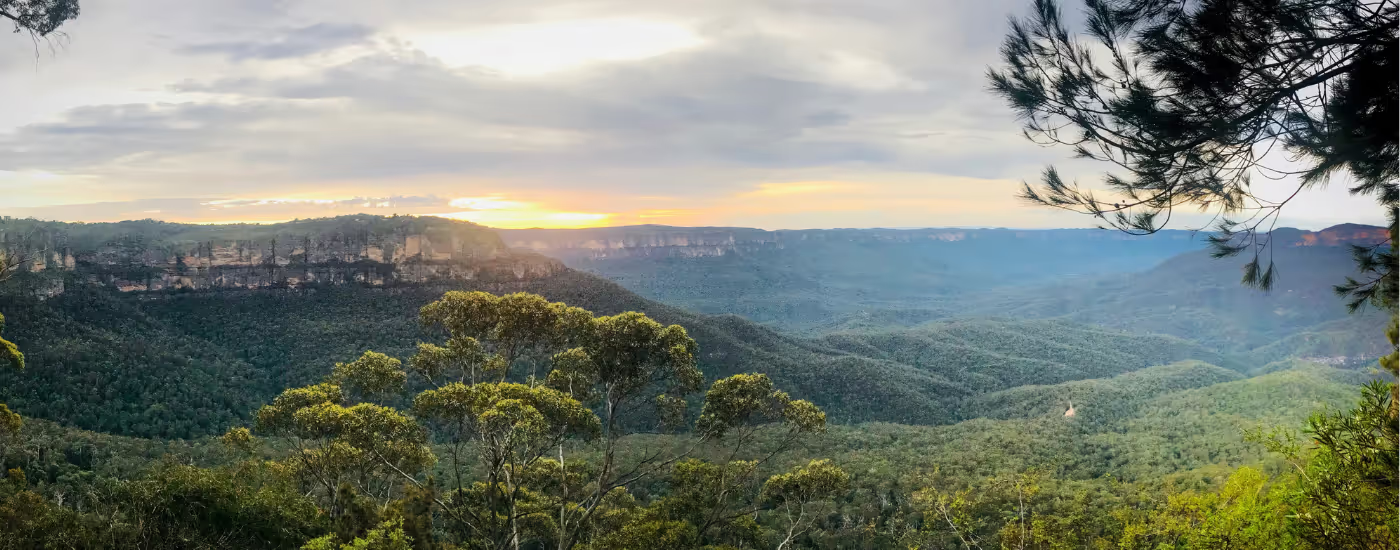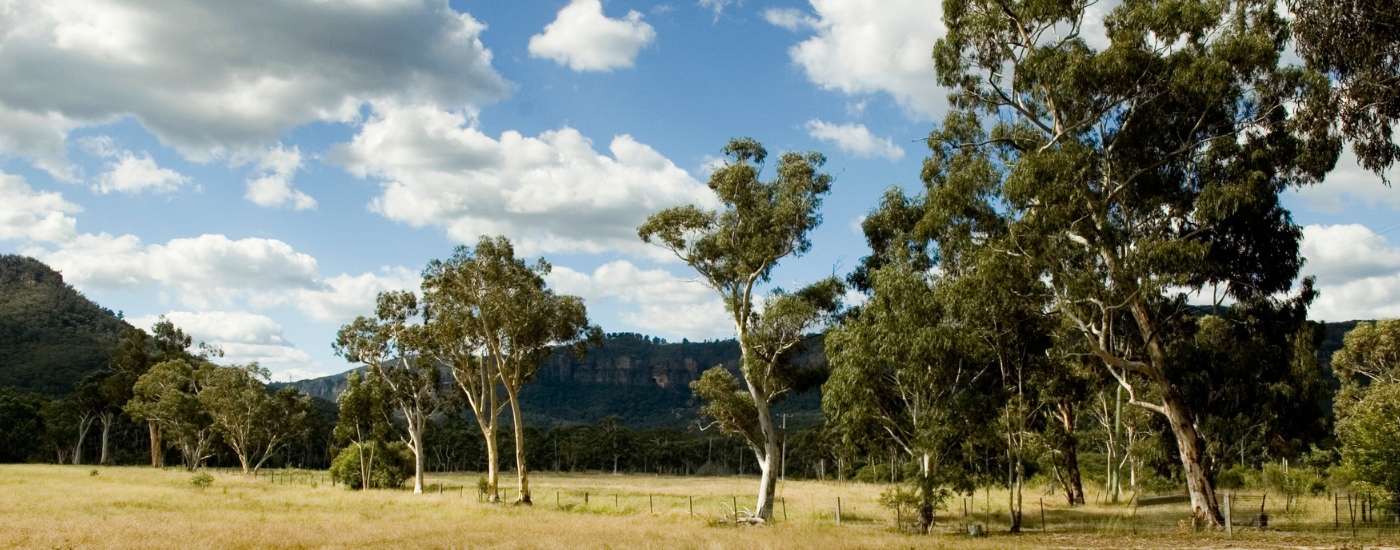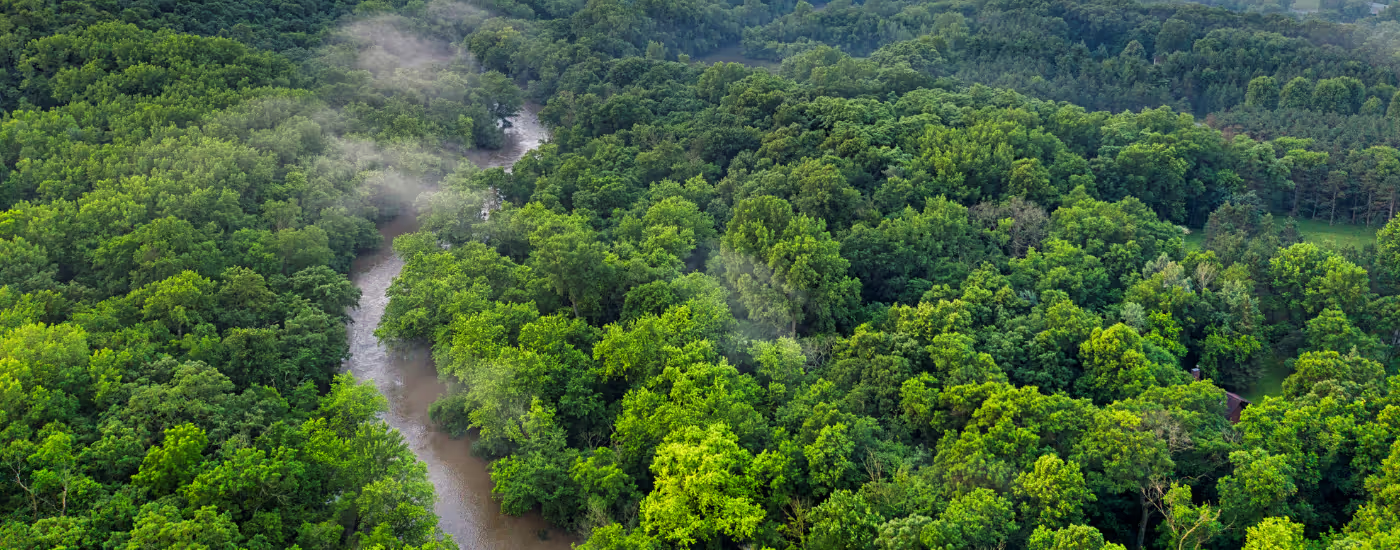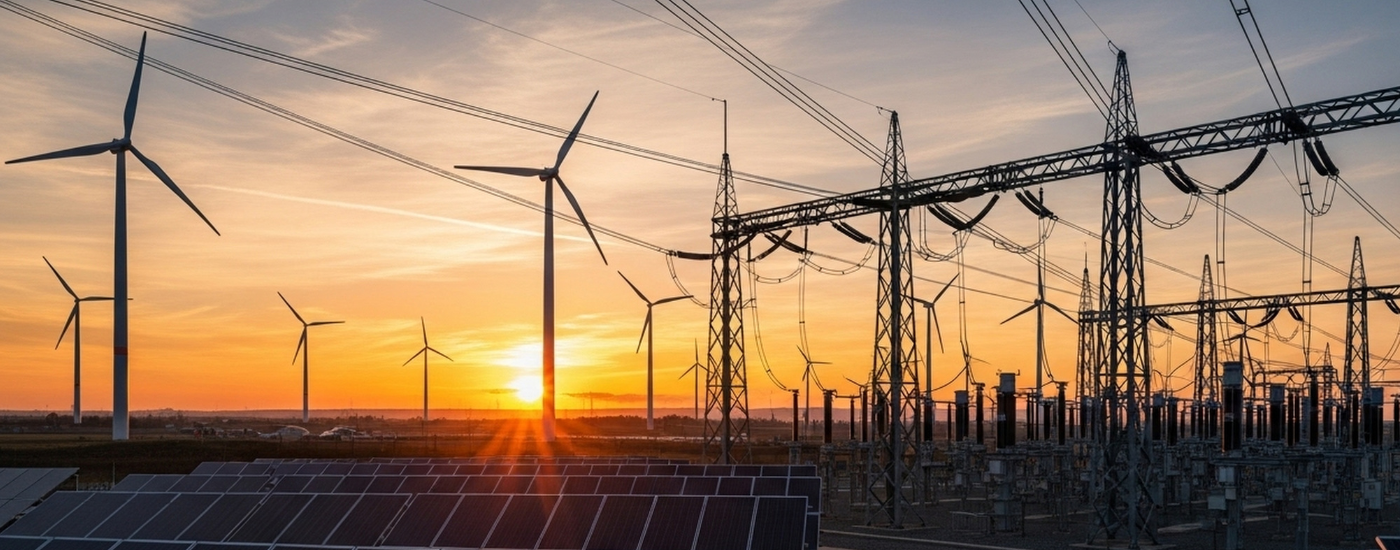Australia’s climate decisions in the next decade will define our economic future. Drawing on the CORE Markets CEO's AER Summit keynote, this piece explores the choices, risks and opportunities shaping our path to net zero.

This article is adapted from the CORE Markets CEO - Chris Halliwell’s - keynote address at the Australian Emissions Reduction (AER) Summit 2025. While the speech was delivered to a live audience, this written version has been shaped to provide additional context and clarity for a wider readership, while preserving the tone and intent of the original.
Reading time: 10 min
Fifteen years ago, Australia was at a crossroads. We convinced ourselves we had time - that 1.5°C was the goal, that the storm was still on the horizon, and action was a choice.
At the Clean Energy Summit recently, listening to Ross Garnaut ask whether we need a carbon price, I was taken straight back to 2012. Back to fierce debates about the kind of market Australia should embrace and the political hesitation and second-guessing that stalled ambition.
We had the chance to implement a fixed carbon price mechanism at $23 a tonne. We turned it down for fear it would slow economic growth. A decade later, the productivity growth we’d hoped to achieve had fallen short of expectations - while the costs of inaction kept rising.
Once again, we’re deciding what ambition looks like - but the question is, are we really still at a crossroads?
We’ve come a long way in 15 years. The carbon market now has infrastructure, expertise, and a depth of human capital and lived experience - proof of what works, and of what distorts. But progress alone isn’t enough. We need to take stock, recharge, and escalate.
Instead of giving another generic call to arms about targets and ambition, I want to share three perspectives that reflect the state of Australia’s decarbonisation journey - from the land sector, from corporate Australia, and from the carbon market itself. Together, they show where we’ve been, where we are, and where we want to be in 2040.

In the lead-up to the Summit, I spoke with people from three corners of Australia’s decarbonisation effort. These are stories based on real experiences that reflect broader shifts across land management, corporate strategy, and market design – three perspectives pointing to the same conclusion: the future we need is within reach, if we choose it.
Let’s start with the land sector – where climate impacts have been deeply felt, and where the potential for transformation is just as great.
Fifteen years ago, Australia was in the grip of the worst drought in our history. Agricultural total factor productivity dropped by around 20%. Billions in farming revenue were lost, never to be recovered. At the time, the idea of farmers participating in carbon markets was seen as too complex – something for policy papers, not paddocks.
An early project registered under the Emissions Reduction Fund was a mixed-species native planting in Queensland. It likely generated hundreds of thousands of credits, improved resilience to drought, flooding and erosion, and significantly increased the land’s value within a decade.
Today, early project developers may have more projects under management, actively developing practices for seeking free, prior and informed consent (FPIC) for project development. Farm operations are increasingly run as fully integrated multi revenue agribusinesses, with proteins, regenerative agriculture and carbon and biodiversity values all stacked. Some have even done digital recreations of entire properties to monitor permanence, performance and design.
Try explaining that to someone 15 years ago!
By 2040, the land sector could be a central driver of Australia’s transition - with hundreds of millions of hectares sequestering carbon while boosting biodiversity and food security. Its transformation would set the tone for the rest of the economy - showing that high ambition is not a cost, but a competitive edge.
In 2010, carbon strategies in large companies often amounted to a mere reference in the sustainability report, if at all. Responsibility sat with a single department, and “net zero” was more slogan than strategy.
Today, climate risk and opportunity sit with Treasury, Future Industries, Corporate Risk and the Board, with climate strategies being discussed as competitive opportunities. Companies are navigating mandatory climate reporting, CBAM compliance, and the complex hierarchy of climate mitigation – managing shareholder expectations with long-term strategic thinking
By 2040, corporate Australia could be competing – and winning – in global markets where low-carbon products command a premium, with industrial emissions cut sharply and remaining so-called 'legacy’ emissions addressed through both engineered and nature-based removals. That corporate ambition depends on a carbon market that is mature, liquid, and trusted.
Fifteen years ago, Australia didn’t have a carbon market at all. No regulation, no registry, no trading infrastructure, no methodologies, no certified abatement. Ten years ago, the price of an Australian Carbon Credit Unit (ACCU) was $13.95. As recently as five years ago, we were still talking about Kyoto carryover credits.
Today, the market is unrecognisable. We have a fully functioning regulator, a functioning registry, over 30 approved methodologies, and more than 2,000 registered projects projected to deliver over $2 billion in revenue to the land sector.
By 2040, Australia’s carbon market could be worth billions annually, linked into regional trading networks and providing the integrity backbone for our net zero economy. It’s the platform that makes the land sector’s scale-up and corporate transformation possible - and the reason Australia can compete in a decarbonising world.
We no longer have to guess at the economic case for decisive climate action. Deloitte’s analysis puts the cost of inaction at around US $178 trillion over the next 50 years, compared with a US $43 trillion net gain from accelerating the transition. All the economic tipping points have already been crossed - clean investment is not just viable, it’s attractive.
And the legal ground has shifted too. The International Court of Justice has issued a unanimous advisory opinion confirming that states have obligations under international law to protect the climate and align their actions with the best available science. This isn’t an abstract statement - it’s an authoritative signal that the rules of the game have changed.
Against that backdrop, the so-called carbon price “debate” is a false binary. It serves only to delay action we already know makes economic and legal sense.
We already have a carbon price. The real question is whether we will widen and deepen it – and fix fragmentation.
Right now, the Safeguard Mechanism covers around 30% of Australia’s national emissions. That’s roughly in line with the share of global emissions covered by carbon pricing. But is it enough? Only if we decide not to aim higher.
And our system is still fragmented. The Productivity Commission has called out policy overlap and the need to tighten scheme settings. These are solvable problems - but solving them requires the same ambition we bring to the targets themselves.

The current headline price of a generic ACCU is around $36. But the Australian Energy Regulator’s benchmark for genuine abatement sits at $75 per tonne today, rising to $157 by 2035. That’s a $40/t gap now, and potentially $80/t in a decade - a “phantom debt” building quietly in the background. It’s not on the budget papers, but it’s real, and we’re accruing it year after year.
When we delay, the cost of carbon doesn’t disappear. It’s just shifted - deferred to future budgets, future policy, and future generations.
And the gap isn’t just domestic. Officially, Australia claims responsibility for about 1% of global emissions. But if we include the emissions embedded in our exported coal and gas, our share jumps to 4.5% - and could reach 9.1% by 2035. That’s 9.1% of the remaining global carbon budget of roughly 200 gigatonnes of CO₂. At a possible $80/t shadow price, that’s $1.5 trillion in contingent liability - sitting off balance sheets but weighing on future cash flows.
That’s the kind of structural exposure that would have any other industry on red alert. And because we don’t account for it, there’s no standing economic benefit from making the resilience or adaptation interventions we know are needed.
The future we choose depends on the Nationally Determined Contribution (NDC) we set today – Australia's official target for reducing greenhouse gas emissions by a given year.
That single decision shapes investment, unlocks pace, and determines whether we accelerate towards net zero - or fall short.
In this case, we’re talking about the percentage reduction in emissions by 2035 compared to 2005 levels.
CORE Markets modelling, commissioned by the Carbon Market Institute, shows how each step-up in ambition delivers more abatement, faster:
The 75% scenario - or higher - is what makes the 2040 vision tangible. It's what gets the land sector to scale, what makes zero-carbon exports our default, and what embeds Australia’s carbon market in a thriving regional network.
That’s what the numbers tell us - ambition is measurable. And it’s equally clear what happens if we undershoot: we lock in higher costs, greater risk, and the loss of opportunities we can’t get back.
Which is why the real question isn’t whether we should act - it’s whether we’ll deliver at the scale and pace the moment demands.
The earlier perspectives from the land, corporate boardrooms, and the market all point in the same direction: if ambition is matched by action, Australia in 2040 could be a global leader in a decarbonised economy. Here’s how that future could take shape.
Hundreds of millions of hectares actively sequestering carbon - integrated with biodiversity restoration, and food security outcomes. Dozens of new carbon sequestration methods in place, with AI, satellite imagery, and remote sensing built into every project baseline, making measurement and reporting instant.
Renewable crops supply a booming sustainable aviation fuel market, driven by SAF mandates and blending targets. Vertically integrated agribusinesses - from asparagopsis to biogas, green hydrogen tractors to smart pasture monitoring - export technology to Europe, South America and Asia.
Agriculture becomes central to Australia’s decarbonisation pathway - and a true sovereign competitive advantage.
And by 2040, the IFLM method is a resounding success.
A thriving export market in zero-carbon innovation is supporting hundreds of thousands of jobs in low-carbon metals, manufacturing, energy, and agri-tech. Australian goods command a premium in CBAM-aligned markets, backed by our own CBAM that protects trade-exposed, low-carbon producers.
Safeguard-covered entities prioritise direct abatement at source. Industrial emissions are down sharply from 2020 levels, with legacy emissions addressed through both engineered and nature-based removals. Supply-chain tracking is instantaneous, GHG accounting is a competitive asset, and fossil fuels are almost entirely phased out.
And yes, by 2040, the Climate Active reforms are in place.
The market is worth billions annually, trading hundreds of millions of ACCUs with deep liquidity, real-time integrity tracking, and full fungibility between carbon credits, renewable energy certificates, REGOs, and Scope 3 insetting units.
The domestic market is linked to markets across the Pacific, Japan, Korea, and India, forming a thriving regional ‘carbon club’. A robust carbon dioxide removals industry delivers both engineered and nature-based solutions, with Safeguard-covered entities required to neutralise their legacy emissions directly.

The idea that we have a choice is an illusion. No credible leader, economist, or business is arguing for delay - because delay is not a path, it’s a dead end.
Fifteen years ago, we told ourselves the storm was still on the horizon. That 1.5°C was a target we could ease towards. All that did was water down ambition - and we missed it.
Now, we are in the storm. And as former Treasury Secretary Ken Henry said just weeks ago, this is our “last best chance.”
This is not a call for ideology. It’s a call for delivery – delivery that safeguards not just industry, but First Nations knowledge, natural systems, regional advantage, and our future economic sovereignty.
Australia can be the nation that turned a climate liability into its most valuable competitive advantage - but only if we stop debating whether to act, and start delivering at the scale ambition demands.
Achieving Australia’s climate ambition takes more than intent – it demands insight, clear market signals, and the right partnerships. CORE Markets provides the data, analysis and strategic support to help you act with confidence.
The illusion of choice: Why Australia’s climate ambition can’t wait

As the NEM Review lands, attention rightly turns to system-level settings. But much of the commercial change shaping renewable and firming supply is already unfolding inside over-the-counter (OTC) energy markets. This article sets out what’s already shifting commercially in a market under review.

As the NEM Review lands, attention rightly turns to system-level settings. But much of the commercial change shaping renewable and firming supply is already unfolding inside over-the-counter (OTC) energy markets. This article sets out what’s already shifting commercially in a market under review.